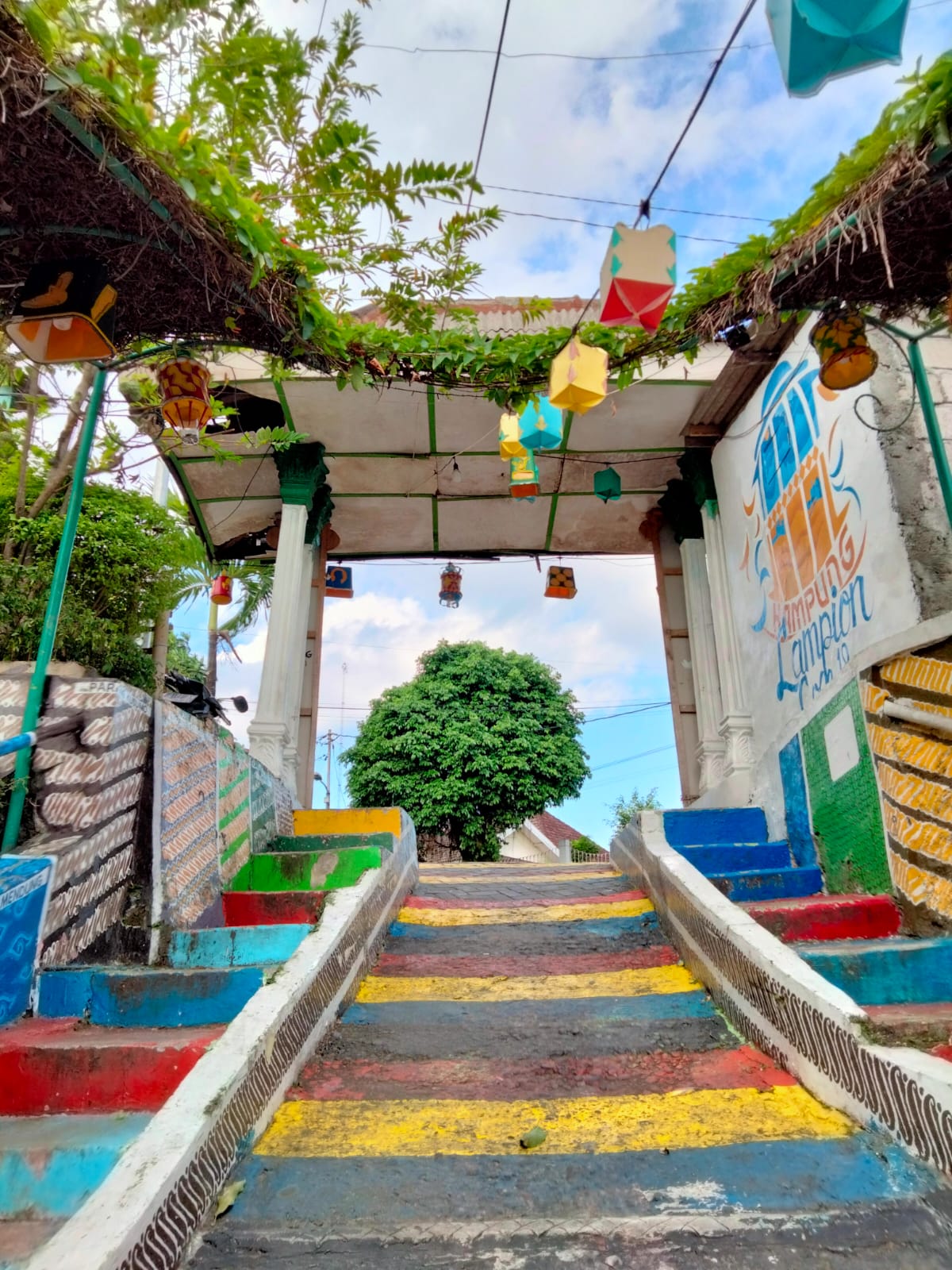Community Participatory Communication Lampion Village In Maintaining Yogyakarta Cultural Identity
Komunikasi Partisipatif Masyarakat Kampung Lampion Dalam Mempertahankan Identitas Budaya Yogyakarta
DOI:
https://doi.org/10.21070/kanal.v10i2.1674Keywords:
City Branding, Lampion Village, Communication Participatory, YogyakartaAbstract
This study aims to determine how the role of participatory communication developed by the people of Kampung Lampion in maintaining their cultural identity, namely the city branding of Jogja Istimewa. This study also uses a qualitative descriptive analysis method that describes and examines more deeply the community's participatory communication in maintaining the unique cultural identity of Jogja to understand what the role of the Kampung Lampion community is in supporting and strengthening the identity of Yogyakarta. The results showed that the Kampung Lampion community participated and fully supported the branding through the implementation and preservation of Kampung Lampion Code 18. The form of participatory communication for the Kampung Lampion Code 18 community consisted of heteroglossia characterized by the diversity of age and profession of the community, the average age of which was 30 to 70 years. Meanwhile, the diversity of community professions consists of housewives, traders, laborers, and civil servants (PNS). Dialogic is a form of communication where there is an interaction transaction between the community and the regional head in deliberation. Polyphonic participatory communication occurs when there is freedom of expression in deliberation conducted by the village of lantern code 18. Carnival participatory communication is marked by community compliance when the government holds activities or programs. Where the community enthusiastically followed directions from the government to join in enlivening the activity.
References
Adona, F., Nita, S., & Mafrudoh, L. (2017). City Branding: Strategi Pemasaran Pariwisata Kota Padang. Seminar Nasional Multi Disiplin Ilmu & Calll For Papers UNISBANK KE-3 (SENDI_U 3, 3(Sendi_U 3), 536–546.
Braun, E. K. dan, & Zenker, S. (2010). My City My Brand: The Role Of Residents in Place Branding. Journal Of Place Management an Development, 1–13.
Dewi, M., & Nulul, N. A. (2018). Komunikasi Partisipatif Masyarakat Industri dalam Mendukung Branding Kota Madiun. Jurnal ILMU KOMUNIKASI, 15(1), 75–90. https://doi.org/10.24002/jik.v15i1.1340
Hazime, H. (2011). From City Branding to E-Brands In Developing Countries An Approach to Qatar and Abu Dhabi. African Journal Of Business Management, 4731–4745.
Herzberg, F. (1966). Work And Nature of Man. Clevaland: World Publishing.
Informan ke-2, 28/07/202.
Informan R3, 28/7/2021
Instagram Kampung Lampion Code18. (2019). Lesehan bareng.
Jose, Cavia, F. (2013). Destination Brands and Website Evaluation: A Research Methodology Revista Latina de Communication Social. 68, 622–638.
Kampung Lampion Code 18. (2019). Kirab Budaya.
Kavaratzis, M., & Ashworth, G. (2005). City Branding An Effective Assertion Of Identity Or a Transitory Marketing Trick? Tijdschrft.
Muchtar, K. (2016). Penerapan komunikasi partisipatif pada pembangunan di Indonesia. Jurnal Makna, 1(1), 20–32.
Pemerintah, G. (2015). Bran/Logo Daerah Istimewa Yogyakarta.
Romadhan, Mohammad, Insan. (2018). Proses Komunikasi dalam City Branding melalui Budaya Musik Saronen Di Sumenep Madura Mohammad. Paper Knowledge . Toward a Media History of Documents, 6(2), 79–90.
Purwianti, L., Ratna, Y., & Lukito, D. (2014). Analisis Pengaruh City Branding Kota Batam Terhadap Brand Attitude. Jurnal Manajemen, 14(1), 61–80.
Satriani, I., & Muljono, P. (2011). Komunikasi partisipatif pada program pos pemberdayaan keluarga. Jurnal Masyarakat Kebudayaan Dan Politik, 9(2), 87-95.
Sinaga, D. (2016). Membangun Komunikasi Partisipatif Masyarakat Di Manonjaya Tasikmalaya. Jurnal Kajian Informasi & Perpustakaan, 2(2), 191–202.
Srampickal, J. S. J. (2006). Development and Participatory Communication. Communication Research Trends Centre for the Study of Communication and Culture, 25(2), 3–43.
Teguh, M., Laurentsia, J. S., Pascarina, P. A., Astuty, S., Widaningsih, T. T., Diana, R., Rahayunianto, A., Furrie, W., Nugraha, A. R., Novianti, E., Komala, L., Komariah, K., Khansa, S. A., Suminar, J. R., Rondonuwu, R. R., Wono, H. Y., Meliany, E., Nugraha, A. R., & Novianti, E. (2019). PUBLIC RELATIONS DAN PERIKLANAN. Buku Litera Yogyakarta.
Theresia, Aprilia; Andini, Krisnha; Nugraha, Prima & Mardikanto, T. (2015). Pembangunan berbasis Masyarakat: Acuan bagi Praktisi, Akademisi dan Pemerhati Pengembangan Masyarakat. Bandung: Alfabeta.
Warta Jogja. (2019). Wawalikota : Membangun Kampung harus fokus, temonjo, iso dirasakake. Warta Jogja Kota.Id.
Yananda, M. R., & Salamah, U. (2014). Branding Tempat: Membangun Kota, Kabupaten, dan Provinsi Berbasis Identitas. Jakarta: Makna Informasi.






